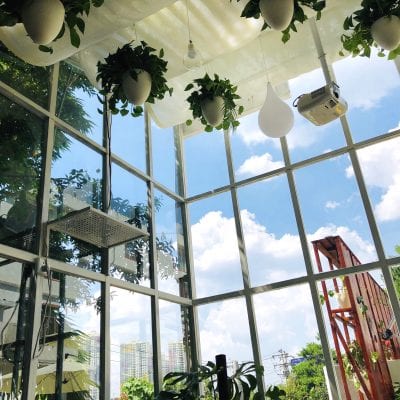Architecture Student Weidong Zhou Designs and Builds Dessert Shop in China
Fifth year student Weidong Zhou designed and built a dessert shop in his hometown of Guiyang, China. Completed during the summer break, the project was designed for the propose of introducing a new recreation space for family and friends while doubling as a commercial dessert shop for a local restaurant. Called 木井PLENTY, the project is located in a quiet residential area 10 miles away from the central part of Guiyang city. In the shop, people can eat desserts, read books and meet with friends.
Weidong Zhou said that, “Plenty is different from the traditional in-and-out dessert stores, Plenty is an integration of architecture and landscape design, where people have both comfortable spaces for enjoying the food and room to spend time interacting with nature as they relax.”
.
.
To specify a threshold of transiting from the exterior environment. Plenty is built upon a concrete pavement in the height of stair step while embracing the landscape. At the entrance of the landscape, a lotus pool is accompanied by two interlocking walls that hide part of the elevation of the building and create a longer path to the entrance of it, prolonging people’s perception of the building. The building is constituted of two different volumes. The glass one is enclosed with four sides of glass curtain walls, allowing people to enjoy the cozy atmosphere while having a full view of the surrounding landscape and the sky. The metal one is semi-open to the exterior with the gap between the column and the holes on the perforated aluminum sheet, creating a space where people can feel the sunlight and the wind.
.
The walls in the landscape divide the outdoor space into three parts, providing people different experiences and interactions with the interior activities. They can look out to the lower landscape on the stand, and enjoy a quiet space in the nook. Weidong Zhou was inspired by a quote from Taoda Ando “When I design buildings, I think of the overall composition as much as the parts of a body that fit together. On top of that, I think about how people will approach the buildings and experience that space.” Weidong has taken two trips to Naoshima to visit Ando’s museums, and is inspired by materiality and spatial experience.

